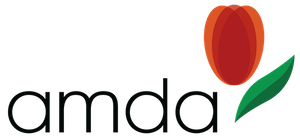The first official IPA Board Meeting occurred in Rotterdam, The Netherlands on Feb. 18-19, 2002. Future agendas were planned and the following committees were formed.
- Communications—Kevin O’Donnell, Alan Muir, Marylyn House
- Patient Organizations—Maryze Schoneveld, Marylyn House
- Legal Issues—Helmut Erny, Ria Broekgaarden
- Financial Budget and Sponsoring—Randall House, Helmut Erny
- Scientific/Industrial Contacts—Randall House, Bob Morrison, Ria Broekgaarden
Issues discussed were:
- Expansion of the existing trials
- New trials
- Product supply
- Compassionate/humanitarian use
- Product registration
- Reimbursement
Timetable of future events. Genzyme has agreed to supply IPA with a detailed progress report on a quarterly basis.
IPA Patient Questionnaire*:
The IPA patient questionnaire will be ready for distribution to the member organizations by the end of the month. Accurate translation of the questionnaire and how to safeguard patient confidentiality was discussed. The first versions for distribution to patients will be available in English and Dutch.
*The purpose of the questionnaire is to gather data in order to classify patients by onset, symptoms, muscle strength, respiratory functions, family history, progression of the disease, mutation, etc. Patient confidentiality will be maintained by a coding system which will allow the IPA to provide equal access of statistical data to researchers, medical institutions, and corporations involved in Pompe research and treatment.
The information on the questionnaire will help researchers learn more about the progression of the disease in order to “fit” patients into categories based on similarities. This will help researchers determine the “path” of illness and the progression of the disease and thereby maximize the efficiency of ERT and future treatments. Participation or non-participation in the questionnaire study will in no way influence a patients participation in clinical trials for Pompe’s disease.
The questionnaire was developed mainly through the endeavors of Dr. C. Loosen, M.D., Ph.D., Rotterdam, The Netherlands. Dr. Loonen, a pediatric neurologist, is an expert in the field. She has been involved in Pompe research for over 30 years and has published numerous articles on the disease.
Following is a summary of the meeting—February 18-19, 2002
by Alan Muir (ASGD-UK):
The IPA (International Pompe Association) meeting of February 18-19, 2002, was chaired by Randall House (AMDA-US). Those present were: Allan Muir (AGSD-UK), Ria Broekgaarden (VSN), Maryze Schoneveld (VSN), Anton Hammink (VSN), Helmut Erny (SHG Glydogenose Deutschland e.V.). The secretary was Paula Waddell, (VSN). Bob Morrison (AMDA-Australia) joined the meeting via telephone hook-up.
The main points of the two days were as follows:
- The IPA (International Pompe Association) constitution was agreed to by those present. Board members were nominated and executive positions filled. Ria Broekgaarden will organize the signing of the constitution and other managerial matters.
- The IPA (International Pompe Association) membership now extends to 27 countries headed by interested groups/persons who represent some 680 Pompe’s patients worldwide.
- The questionnaire, to be used for compiling the Pompe’s Registry, has been completed and agreed to by professionals, expert in the Pompe field. It now needs to be translated into the appropriate languages before being issued to the support groups for distribution to patients.
During the evening of the 18th, Dr. Ans van der Ploeg and Dr. Arnold Reuser were invited to talk about the on-going clinical trials, and Dr. Patrick Cabri, Genzyme Europe, gave a presentation on the ERT registration process in Europe.
Dr. van der Ploeg had little additional news from the current trials in Rotterdam. She did, however, say that ERT should not be considered alone in the treatment of Pompe’s. For good recovery, it must be part of a good rehabilitation program including physiotherapy and other practical training. She added that keeping as healthy as possible prior to ERT is also important; the therapy is most effective with those patients least affected.
Dr. Cabri, Genzyme-Europe, provided the following information:
- Dr. Cabri described the procedure for achieving drug approval in Europe by the EMEA, the European Agency for the Approval of Medicinal Products. A dossier is currently being compiled from all the research and trials and will (soon?) be submitted. Approval will take at least 12 months. The dossier will be presented for scientific scrutiny to 15 countries. After approval through EMEA, Genzyme must seek national approval (in Europe). This can take 1 to 24 months. It is important that the national government offices be aware of the drug before its submission to save valuable time.
- Compassionate use was discussed, and Dr. Cabri stated that once ERT is licensed (this is prior to universal marketing of the drug) for use in a country, it will be up to a patient’s physician to apply for the drug on compassionate grounds. However the acceptance criteria is likely to be quite harsh (e.g. must be life-threatening situation). Genzyme is currently working on a development plan – which includes proposals for compassionate use. An announcement on this is expected ‘soon’.
- Approval by the US-FDA was also brought up. Basically the same timetable should apply for the approval process in the US. Genzyme is working towards approval in the US and Europe simultaneously.
- Availability of the ERT is likely to be another issue as there is currently a worldwide shortage of fermenters. Production facilities in the US have room for expansion, but many other orphan drugs in development will be competing for their use—short term (next 5 years). This is a real problem, but it is being aggressively addressed by Genzyme.
